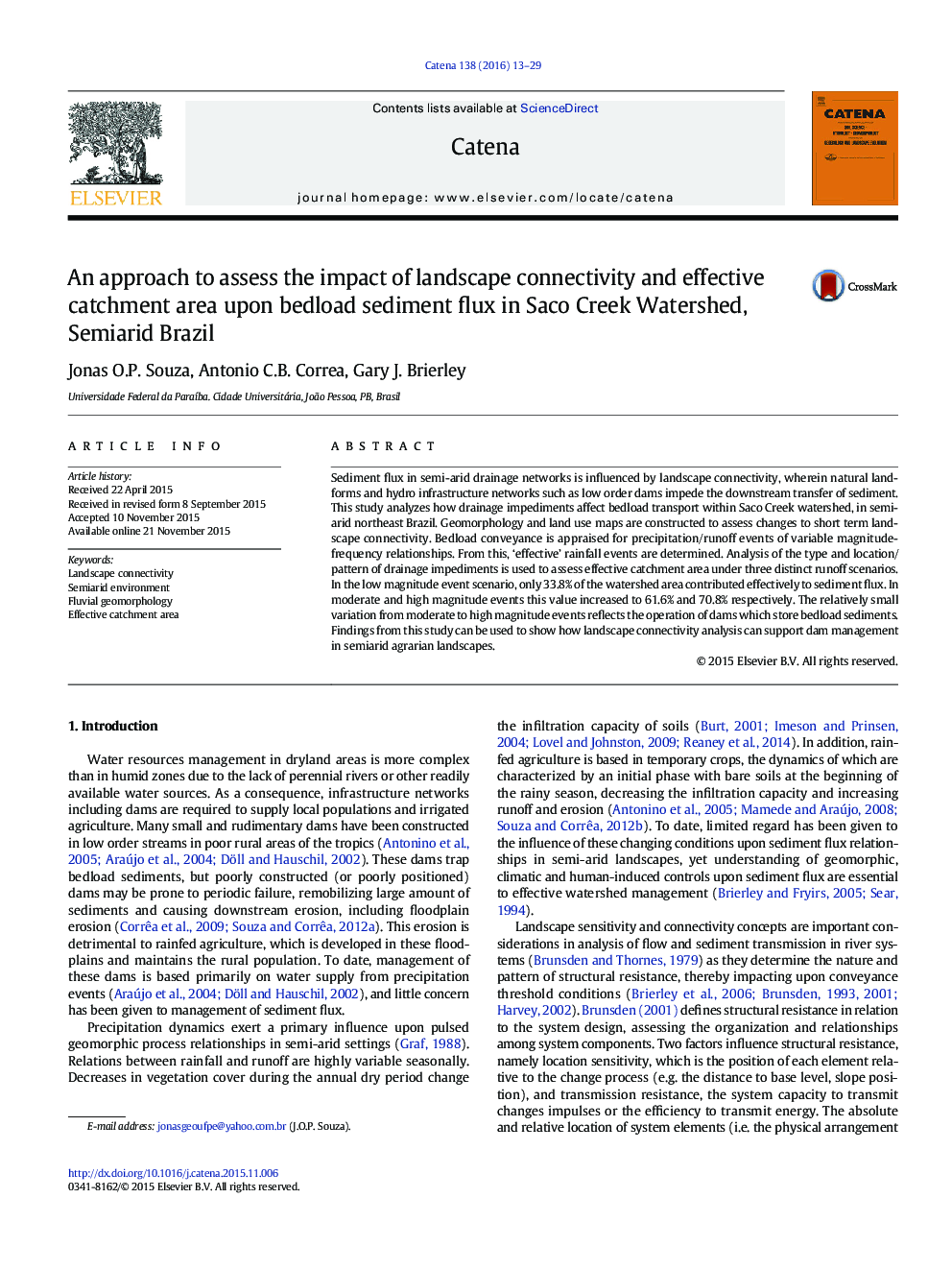| Article ID | Journal | Published Year | Pages | File Type |
|---|---|---|---|---|
| 4570981 | CATENA | 2016 | 17 Pages |
•Agents of landscape disconnectivity are assessed for a semi-arid watershed in Brazil•Controls on pulsed bedload transport are appraised•Within-catchment variability in low, moderate and high magnitude events is shown•ECA for low, moderate and high magnitude events are 34, 62 and 71% respectively•Discontinuous sediment flux is important for watershed management in dryland settings
Sediment flux in semi-arid drainage networks is influenced by landscape connectivity, wherein natural landforms and hydro infrastructure networks such as low order dams impede the downstream transfer of sediment. This study analyzes how drainage impediments affect bedload transport within Saco Creek watershed, in semi-arid northeast Brazil. Geomorphology and land use maps are constructed to assess changes to short term landscape connectivity. Bedload conveyance is appraised for precipitation/runoff events of variable magnitude-frequency relationships. From this, ‘effective’ rainfall events are determined. Analysis of the type and location/pattern of drainage impediments is used to assess effective catchment area under three distinct runoff scenarios. In the low magnitude event scenario, only 33.8% of the watershed area contributed effectively to sediment flux. In moderate and high magnitude events this value increased to 61.6% and 70.8% respectively. The relatively small variation from moderate to high magnitude events reflects the operation of dams which store bedload sediments. Findings from this study can be used to show how landscape connectivity analysis can support dam management in semiarid agrarian landscapes.
